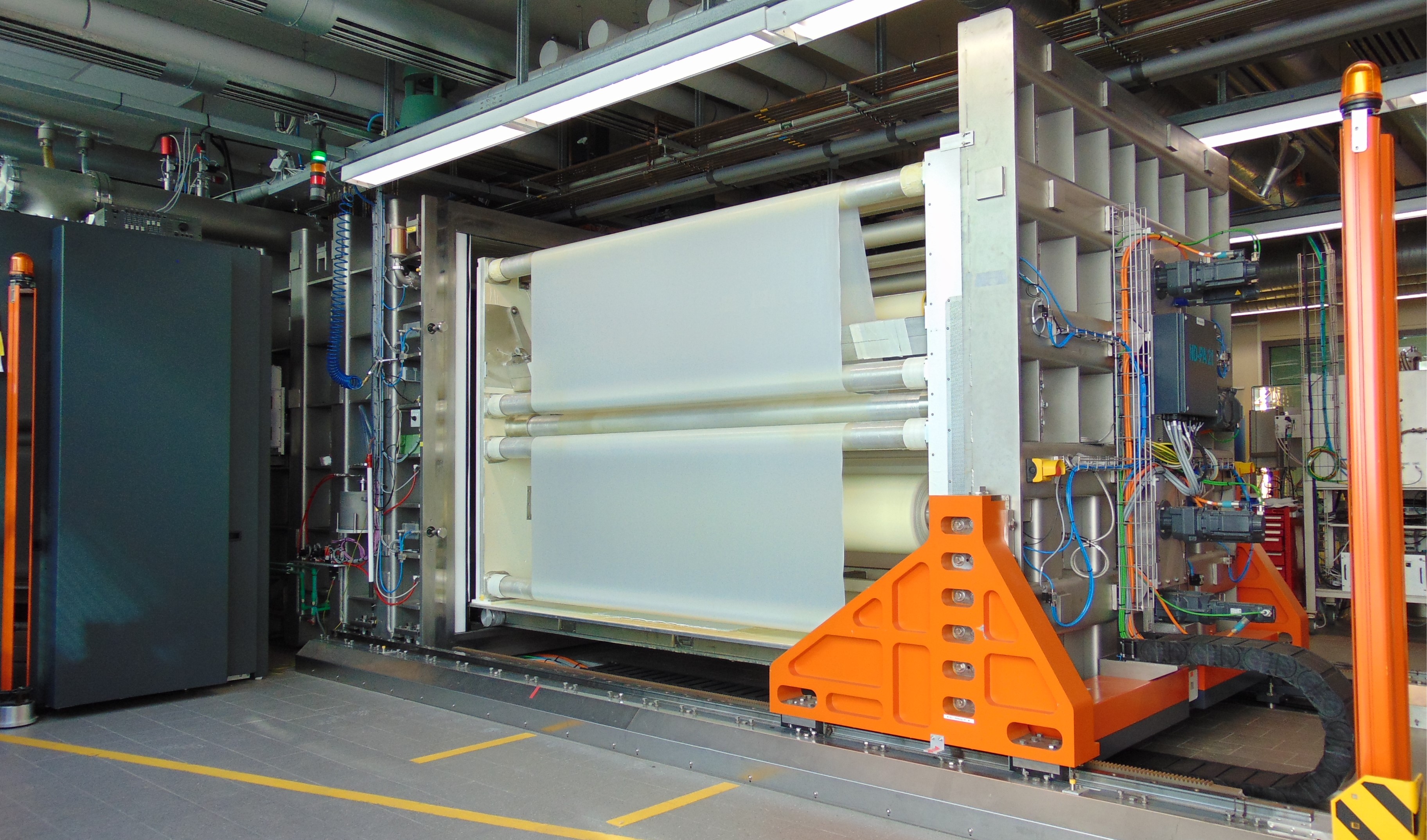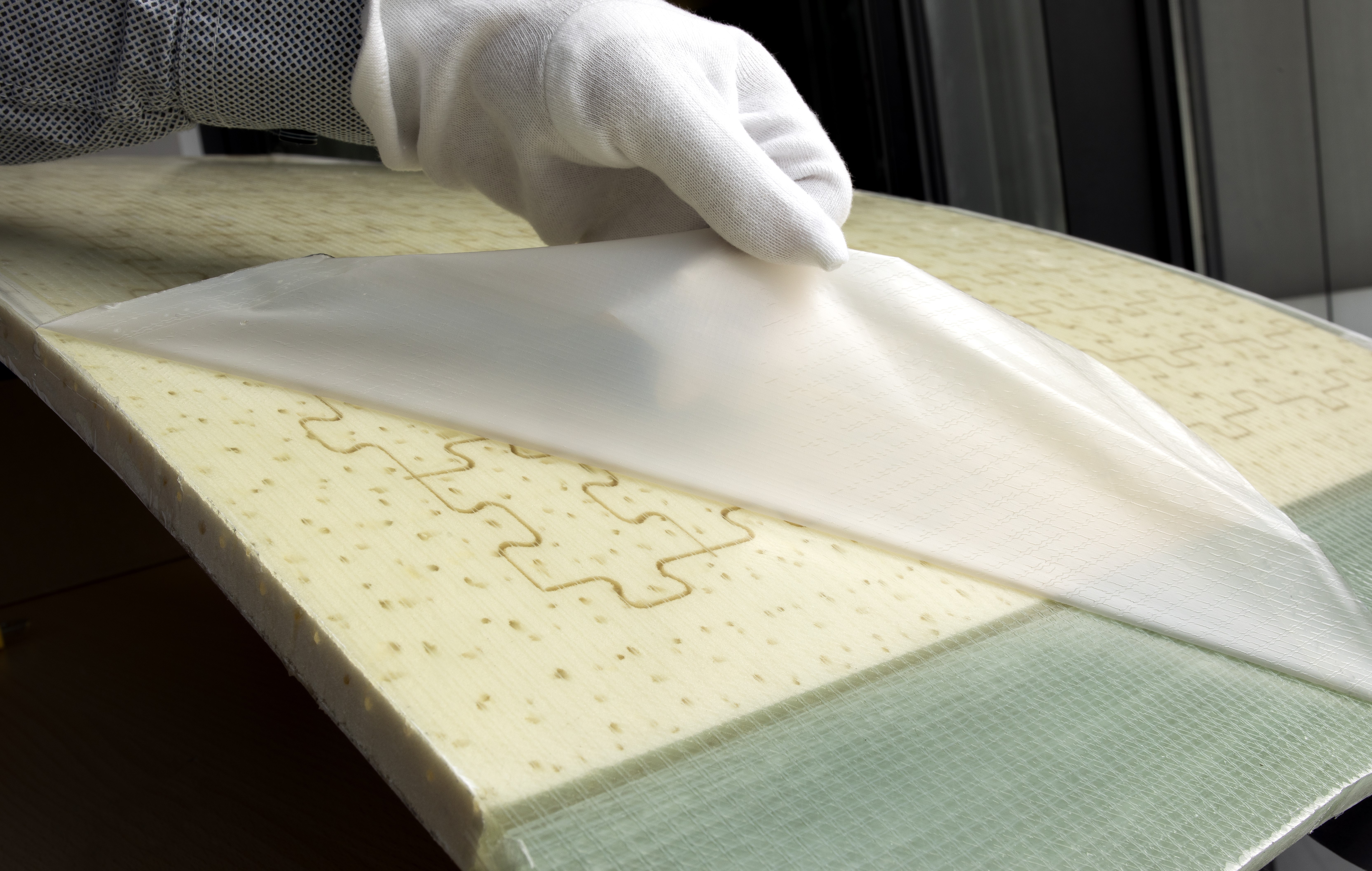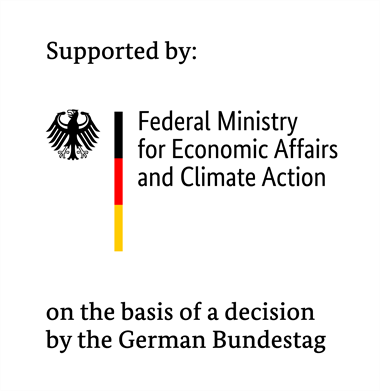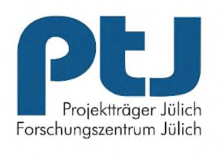Increased efficiency of rotor blade production for wind turbines using PeelPLAS® release film from Fraunhofer IFAM
Successful completion of the joint project ”Optimized rotor blade production through release agent-free process and material systems” – “OptiBlade” – funded by the German Federal Ministry for Economic Affairs and Climate Action (BMWK)



By developing release agent-free process and material systems in the sub-project “Release film technology for optimized rotor blade production” of the joint project ”OptiBlade”, researchers at the Fraunhofer Institute for Manufacturing Technology and Advanced Materials IFAM, together with their partners Olin Blue Cube Germany and Infiana Germany, succeeded in optimizing rotor blade production for wind turbines, thereby providing the basis for considerably reducing their manufacturing costs. The cost-efficient production automation achieved, including increased quality assurance and improvements in health protection and ergonomics during production, will enable the expansion of wind turbines to be driven forward in the context of the Energy Concept 2050.
Extra-wide PeelPLAS® release film from new plasma plant for web goods ...
As part of the project, Fraunhofer IFAM not only started up a specially designed new low-pressure plasma plant for web material, but also developed plasma processes which can be used to apply an ultrathin plasma polymeric release layer to polymer film half-tubes up to 2.4 m wide. The resulting flexible stretch-formable PeelPLAS® release film – a subsequent development of the Fraunhofer IFAM FlexPLAS® release film – reaches a width of up to 4.8 m when unfolded. For even wider molds for the production of rotor blades made of fiber-reinforced plastics (FRP), this release film can also be welded without any problems.
... for release agent-free rotor blade production on a 1:1 scale plus coating
Additionally, by means of a specially developed process, a PeelPLAS® release film half-tube folded up to 4.2 m could be applied by stretching like a second skin onto an 18 m long segment mold of the Fraunhofer IWES to produce a 40 m long FRP rotor blade. A rotor blade demonstrator was then manufactured in the mold together with the cooperation partner Olin Blue Cube Germany. Thanks to the excellent adhesion of the plasma layer to the film, this could be demolded transfer-free with the PeelPLAS® release film without the use of conventional release agents and immediately processed further: After removal of the film from the large FRP component, its epoxy resin matrix could be coated with a repair coating for rotor blades without further pre-treatment. Even after 1000 hours of exposure in a condensation water test, the coating still showed excellent adhesion.
Release agent-free demolding of large FRP components ...
The plasma-coated flexible PeelPLAS® release film developed by the experts for Plasma Technology and Surfaces as well as the experts for Automation and Production Technology at Fraunhofer IFAM is based on a thermoplastic elastomer film. The release film is successfully used for the production of contamination-free large components made of fiber-reinforced plastics, adapted to special industry and customer requirements, and continuously developed for further use. It serves as a substitute for conventional release agents and offers, among other things, the advantage of carryover-free and reliable component demolding. In this way, the release film ensures consistently high component quality.
... to increase efficiency, ergonomics, health, and sustainability
The processes developed by Fraunhofer IFAM in the "OptiBlade" project using the PeelPLAS® release film increase the value added along the process chain, not only by optimizing the surface quality of the manufactured rotor blades, but also by avoiding labor- and time-intensive work. Particularly to be mentioned in this context are the manual operations for cleaning and cutting in the tool molds, as well as the time-consuming grinding off of the release agent residues between curing and coating of the manufactured rotor blades. On the one hand, these manual work steps are carried out in an unergonomic body position and – due to the intensive contact with grinding dusts and hazardous substances – place high demands on the health protection of the personnel.
Furthermore, mold loading time is significantly reduced during component production because the molds no longer have to be cleaned. In addition, this significantly extends the service life of the molds, as they no longer wear out due to abrasive cleaning processes. Finally, the film, which can also be used in more complex mold geometries, serves not only as protection for the cured component, but can also be removed from it easily and without leaving any residue: what remains is a matte and clean surface that can be coated without pre-treatment.
Perspectives
Based on these results, a new type of plasma-coated multilayer film is to be developed within the planned cooperation project ”Sustainable and efficient rotor blade production with emission-reduced processes for the formation of surfaces (NEOFOIL)” as part of the 7th Energy Research Program of the German Federal Ministry for Economic Affairs and Climate Action (BMWK). This film will be fixed to the mold as a semi-permanent release film and will enable multiple demoldings of FRP components. Besides reducing the amount of waste, this will also lead to a further reduction in the amount of work required and the mold occupation time. Consequently, the manufacturing costs for rotor blades can be further reduced and their availability increased.
In addition, the knowledge already gained and technologies developed in the "OptiBlade" research project can not only be further advanced and implemented for rotor blade production, but also transferred to the production processes of other industries – such as aircraft, spacecraft, rail vehicle, commercial vehicle, automotive, shipbuilding or sports equipment manufacturing – to increase efficiency.
Project Funder
After a duration of more than four years, the sub-project “Release film technology for optimized rotor blade production – first project phase” (funding code: FKZ 0324177A), funded by the German Federal Ministry for Economic Affairs and Climate Action (BMWK), as part of the joint project “Optimized rotor blade production using release agent-free process and material systems – first project phase (OptiBlade-1)” came to an end. Fraunhofer IFAM would like to thank on behalf of the project partners Blue Cube Germany Assets GmbH & Co. KG (Olin Blue Cube Germany) and Infiana Germany GmbH & Co. KG, the BMWK for the funding provided and the Project Management Jülich (PtJ) for the support.


Further information
- Final report
The final report is available at DOI 10.2314/KXP:1848295456 here: https://www.tib.eu/de/suchen/id/TIBKAT:1848295456.
- Website
www.ifam.fraunhofer.de/en/stade
www.ifam.fraunhofer.de/en/technologies/release-film-for-manufacturing-frp-components.html
Photos
© Fraunhofer or Fraunhofer IFAM, but can be published in reports about this press release. Download here: www.ifam.fraunhofer.de/en/Press_Releases/Downloads.html
Photos and PDF for Download
Last modified:
 Fraunhofer Institute for Manufacturing Technology and Advanced Materials IFAM
Fraunhofer Institute for Manufacturing Technology and Advanced Materials IFAM